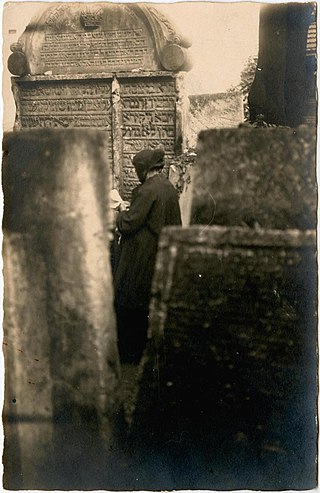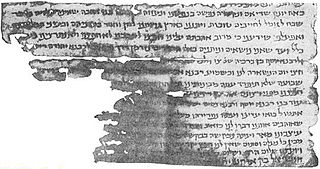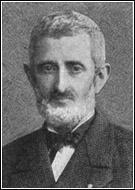
The Leghorn, Italian: Livorno or Livornese, is a breed of chicken originating in Tuscany, in central Italy. Birds were first exported to North America in 1828 from the Tuscan port city of Livorno, on the western coast of Italy. They were initially called "Italians", but by 1865 the breed was known as "Leghorn", the traditional anglicisation of "Livorno". The breed was introduced to Britain from the United States in 1870. White Leghorns are commonly used as layer chickens in many countries of the world. Other Leghorn varieties are less common.

Haim Yosef David Azulai ben Yitzhak Zerachia, commonly known as the Hida, was a Jerusalem born rabbinical scholar, a noted bibliophile, and a pioneer in the publication of Jewish religious writings.

Joshua ben Alexander HaCohen Falk was a Polish Halakhist and Talmudist, best known as the author of the Drisha and Prisha commentaries on the Arba'ah Turim as well as Sefer Me'irat Enayim (סמ"ע) on Shulkhan Arukh. His name also occurs as the Hebrew acronyms רפ"כ ("RaFaC"), מהרו"כ ("Ma-HaRWaC"), and מהר"י כ"ץ.

Shlomo ben Avraham ibn Aderet was a medieval rabbi, halakhist, and Talmudist. He is widely known as the Rashba, the Hebrew acronym of his title and name: Rabbi Shlomo ben Avraham.

Chushiel ben Elchanan was president of the bet ha-midrash at Kairouan, Tunisia toward the end of the 10th century. He was most probably born in Italy, but his origins and travels remain obscure, and his eventual arrival in Kairwan is the subject of a well-known story.
Isaiah di Trani ben Mali (the Elder) (c. 1180 – c. 1250) (Hebrew: ישעיה בן מאלי הזקן דטראני), better known as the RID, was a prominent Italian Talmudist.
Perez ben Elijah of Corbeil was a French tosafist, son of the Talmudist Elijah of Tours. In Talmudic literature he is designated by the abbreviations RaP, RaPaSh, and MaHaRPaSh.
Shem Tov ben Abraham ibn Gaon was a Spanish Talmudist and kabbalist.
Simeon ben Zemah Duran, also Tzemach Duran, known as Rashbatz (רשב"ץ) or Tashbatz was a Rabbinical authority, student of philosophy, astronomy, mathematics, and especially of medicine, which he practised for a number of years at Palma de Mallorca. A major 15th century posek, his published decisions in matters of halakha have been widely quoted in halakhic literature for hundreds of years.
David Najar was a rabbinical writer of Tunis, where he died at the beginning of the nineteenth century. He was the author of Ẓemaḥ Dawid, which was published after his death, together with the Admat Yehudah of Judah Cohen Tanugi, and which contains novellæ to some tractates of the Talmud and to some parts of Maimonides' Yad.
Judah ben Jacob Najar was a Talmudic scholar, author, dayyan, nephew of Judah Cohen Tanugi, and member of the rabbinate in Tunis, where he died at an advanced age. He was the author of the following works:
Shemariah ben Elijah Ikriti of Negropont was a Greek-Jewish philosopher and Biblical exegete, contemporary of Dante and Immanuel the Roman.
Shemariah ben Elhanan was head of the yeshivah of Cairo, Egypt, about the end of the 10th century. Abraham ibn Daud relates that Ibn Rumais, an Arab admiral, had captured four scholars who were voyaging from Bari to Sebaste to collect money for the maintenance of the great school in Babylonia, and that one of the four was called Shemariah b. Elhanan. Shemariah was sold by his captor at Alexandria, where he was afterward ransomed by rich Jews.
Abraham ben Yechiel-Michel Catz Ha Cohen of Lask was a Jewish ascetic who flourished at the end of the 18th century. He went to live at Jerusalem in 1785, but afterward traveled through Europe as an agent for the collection of donations for the Polish Jews in the Eretz Yisrael, making Amsterdam his center; he died as Hakam at Safed, during a riot against the Jews, who had protested against excessive taxation. Another version says he was punished by the Turks, in Jerusalem, and died in Safed, in 1799; there he was buried. He did not have children. Abraham was an ascetic of a remarkable type; he fasted six days of the week, from Sabbath night to Sabbath eve, but feasted quite luxuriously on the Sabbath. Often he devoted entire days and nights to the study of the Torah, standing upright during that time. He took his daily ablutions in the river before offering his prayers in the morning, often breaking through the ice in winter for this purpose. Yet in spite of all this austerity he was a man of uncommon vigor.
Judah Leon ben Moses Mosconi was a Bulgarian scholar and Talmudist born at Ohrid. Owing to the wars which agitated Bulgaria in the 14th century, Mosconi left his native country about 1360. He traveled in all the three continents of the Old World. He was in Chios and Cyprus, in Négropont, in Laodicea, and later in Egypt. He was afterward in Morocco, in Italy, and in France. In Perpignan he made the acquaintance of several scholars, among them Moses Narboni and David Bongoron.
Mordecai Baruch Carvalho was a wealthy merchant and rabbi from Tunis.

Elijah Benamozegh, sometimes Elia or Eliyahu, was an Italian Sephardic Orthodox rabbi and renowned Jewish Kabbalist, highly respected in his day as one of Italy's most eminent Jewish scholars. He served for half a century as rabbi of the important Jewish community of Livorno, where the "Piazza Benamozegh" now commemorates his name and distinction. His major work is Israel and Humanity (1863), which was translated into English by Dr. Mordechai Luria in 1995.
Joseph Castello was an Italian Jewish physician, son of Rabbi Abraham Isaac Castello. After studying medicine at Pisa, he returned to his native city, where he soon acquired a reputation as a physician. A medical work written by Castello and dedicated to the archduke, did not appear until after his death, which occurred while he was still in the prime of manhood. Castello's brother Samuel was an eminent physician at Leghorn, and his son Abraham Isaac a lawyer and poet in the same city.
Judeo-Tunisian Arabic, also known as Judeo-Tunisian, is a variety of Tunisian Arabic mainly spoken by Jews living or formerly living in Tunisia. Speakers are older adults, and the younger generation has only a passive knowledge of the language.
Muhammad ibn Rumahis was a Muslim Admiral in 10th Century Spain. He is remembered in Jewish History for capturing of four Babylonian Rabbis and ransoming them to the Jewish communities of Alexandria, Kairouan, Spain, and one unidentified other location.
 This article incorporates text from a publication now in the public domain : Louis Ginzberg and Meyer Kayserling (1901–1906). "Catarivas, Shemariah". In Singer, Isidore; et al. (eds.). The Jewish Encyclopedia . New York: Funk & Wagnalls.
This article incorporates text from a publication now in the public domain : Louis Ginzberg and Meyer Kayserling (1901–1906). "Catarivas, Shemariah". In Singer, Isidore; et al. (eds.). The Jewish Encyclopedia . New York: Funk & Wagnalls.




